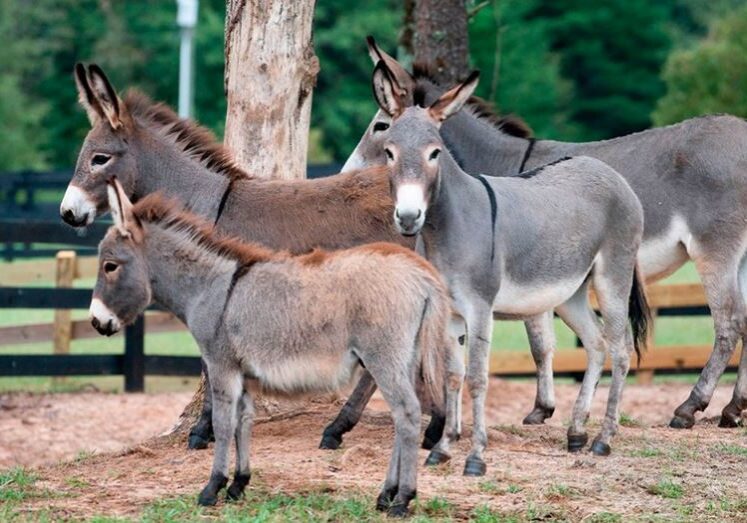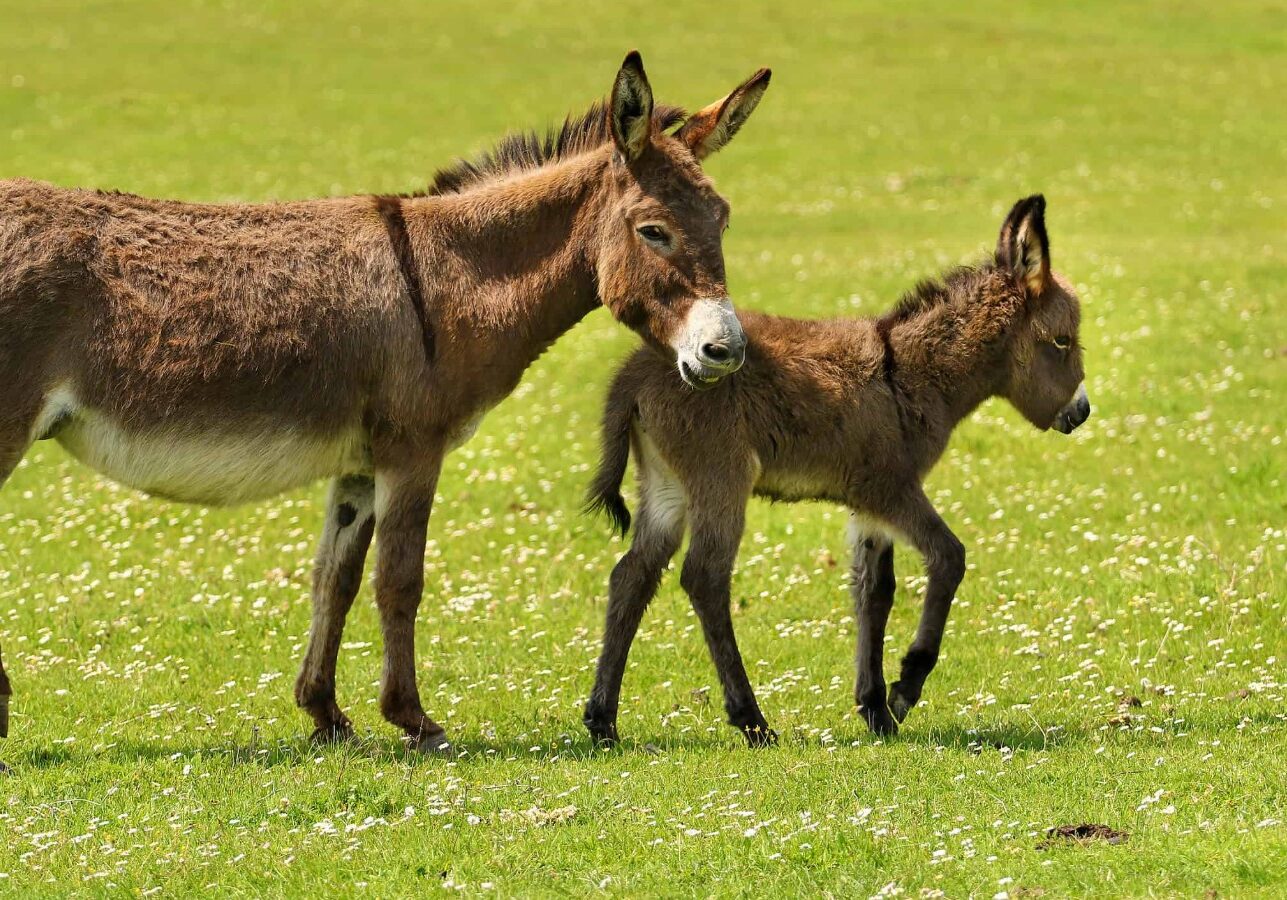
Let's learn more about Donkeys
The donkey or ass is a domesticated equine. It derives from the African wild ass, Equus africanus, and may be classified either as a subspecies thereof, Equus africanus asinus, or as a separate species, Equus asinus. It was domesticated in Africa some 5000–7000 years ago,and has been used mainly as a working animal since that time.
Discovery
Study of Donkeys
There are more than 40 million donkeys in the world, mostly in underdeveloped countries, where they are used principally as draught or pack animals. While working donkeys are often associated with those living at or below subsistence, small numbers of donkeys or asses are kept for breeding, as pets, and for livestock protection in developed countries.
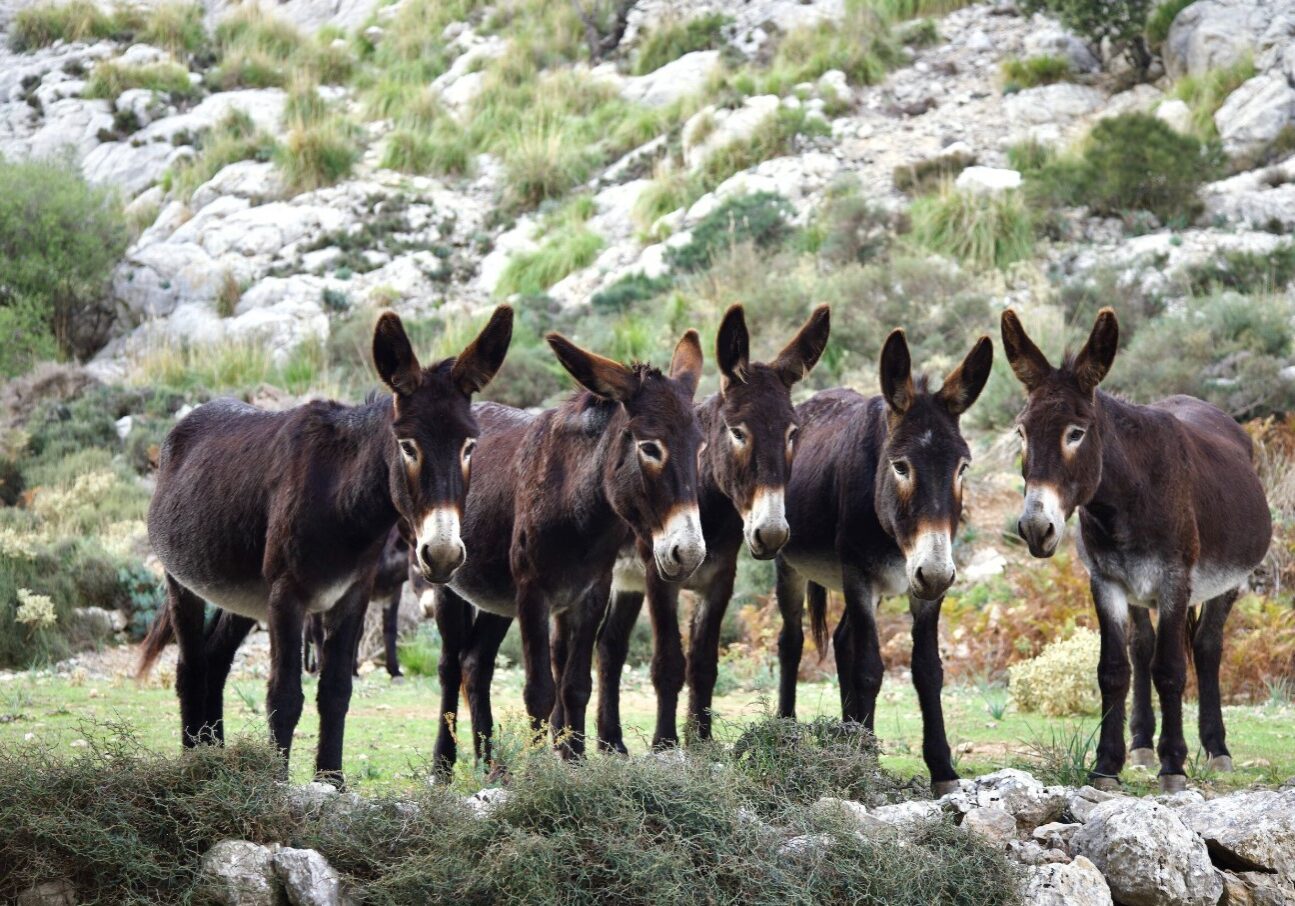
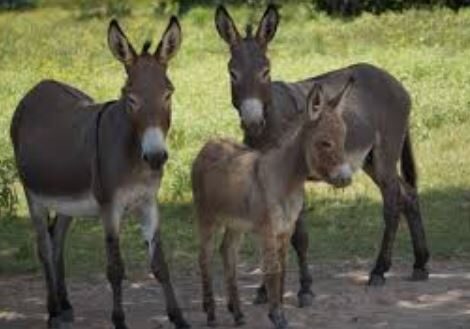
An adult male donkey is a jack or jackass, an adult female is a jenny or jennet, and an immature donkey of either sex is a foal. Jacks are often mated with female horses (mares) to produce mules; the less common hybrid of a male horse (stallion) and jenny is a hinny.

donkeys are actually quite intelligent
Donkeys are considered great animals because they are highly intelligent, loyal, strong, and have a strong sense of self-preservation, meaning they are unlikely to do something they perceive as unsafe; they are also known for their ability to protect herds and are often used as guard animals, making them valuable companions on farms and in communities where they can carry heavy loads over difficult terrain while remaining calm and dependable.
Key points about donkeys:
Intelligence:
Donkeys have excellent memories and can learn quickly, sometimes at a similar pace to dogs and dolphins.
Protective nature:
They are known to fiercely guard their herds, acting as watchful guardians against predators.
Strength and endurance:
Despite their smaller size compared to horses, donkeys can carry heavy loads over long distances.
Cautious behavior:
Their reputation for "stubbornness" is often attributed to a strong sense of self-preservation, meaning they are unlikely to engage in risky situations.
Social animals:
Donkeys are very social and form strong bonds with their herd mates.
Adaptability:
They can thrive in various environments and are well-suited to challenging terrain.



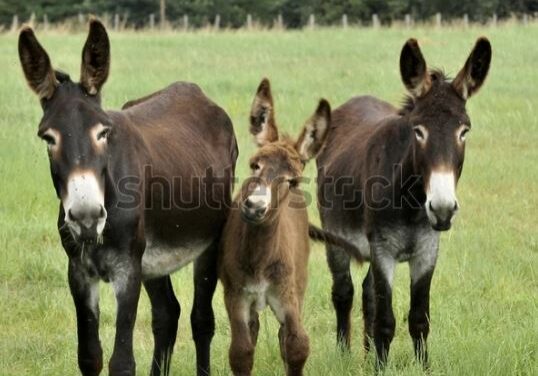
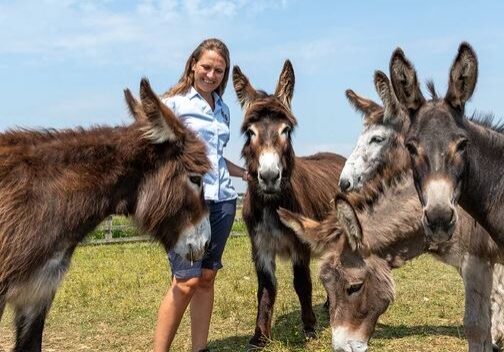
In developed countries where their use as beasts of burden has disappeared, donkeys are used to sire mules, to guard sheep, for donkey rides for children or tourists, and as pets. Donkeys may be pastured or stabled with horses and ponies, and are thought to have a calming effect on nervous horses. If a donkey is introduced to a mare and foal, the foal may turn to the donkey for support after it has been weaned from its mother.
In the United States, Canada, and Australia, donkeys are used as livestock guard animals for smaller livestock such as sheep. When working as livestock guard animals, also called predator control animals or mobile flock protectors, donkeys will bray loudly and attack potential predators by kicking out with their front hooves. In 2019, donkeys comprised 14.2% of livestock guard animals in the United States.
A few donkeys are milked or raised for meat. Approximately 3.5 million donkeys and mules are slaughtered each year for meat worldwide. In Italy, which has the highest consumption of equine meat in Europe and where donkey meat is the main ingredient of several regional dishes, about 1,000 donkeys were slaughtered in 2010, yielding approximately 100 tonnes (98 long tons; 110 short tons) of meat. Asses' milk may command good prices: the average price in Italy in 2009 was €15 per litre, and a price of €6 per 100 ml was reported from Croatia in 2008; it is used for soaps and cosmetics as well as dietary purposes. The niche markets for both milk and meat are expanding. In the past, donkey skin was used in the production of parchment. In 2017, the UK based charity The Donkey Sanctuary estimated that 1.8 million skins were traded every year, but the demand could be as high as 10 million.
